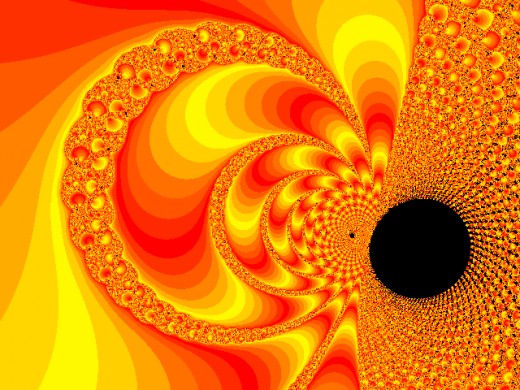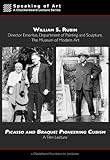Cubism: A Geometry of France

Media Coverage of Cubism in the 1950s
An article in an issue of Time Magazine from 1956 sums up some very important facts in determining who might bee the Father of Cubism.
Art: THE CUBIST'S CUBIST; Monday, Aug. 06, 1956; Time Magazine.
This article states that the young artist, Juan Gris, had accumulated only the most basic arts training in Madrid, Spain before relocating to France in order to be near Picasso at Rue Ravignan in 1906. It was there in 1907 that Picasso created Les Demoiselles d' Avignon, called "the first cubist painting." However, Gris was already developing his own style within cubism, according to Time.
This suggests to me that Gris was the most original of the founders of Cubism and could be called its father. He is said to have never thought about the concept of "cubism" per se, and that his style felt natural to him. To me, that makes a founder - one already performing in a style that others are considering inventing. In fact, Time called Juan Gris "the purist cubist of them all."
Gris himself did a cubist portrait of Picasso, presented to the right and it is an enjoyable work. Of Picasso's own works, I most admire Guernica, which PBS presented in their documentary Guernica: Testimony of War (Reference: included at PBS.org). The artist's role is often to move the public to emotion, thought, and action; this painting in its political and artistic aspects has done all of that.

University of Southern California (USC)
USC hosts the superb CUBISM IMAGE BANK online at their online page at http://www.usc.edu/dept/architecture/slide/babcock/. The line of Cubist artists they present takes this order:
- Georges Braque
- Paul Cezanne (1839 - 1906) - His work is considered the precursor to Cubism and it was rejected many times by the French art world.
- Marc Chagall (1889 - 1985)
- Marcel Duchamp (1887 - 1968) - Famous for Nude Descending a Staircase in 1912
- Juan Gris
- Fernand Leger (1897 - 1955) - Developed a style of cylindrical Cubism.
- Piez Mondrian (1872 - 1944) - Painted famous rectangle pictures.
- Pablo Picasso
Nude Descending a Staircase #2


Violin and Checkerboard

Developmental Considerations
The first mention I see of Cubism comes in the lifetime of Maurice Tete (1880- 1940), born in France, as indicated on AskArt Academicat askart.com. Tete studied with William Bouguereau (angels and human figures), but gave up this traditional style for a bent toward neo-impressionism, later interesting himself in Cubism as he progressed to the more geometrical concepts. He may have been one of the first cubists or pre-cubists.
Tete may or may not have dabbled with Cubism before Picasso's first cubist work, but some authorities state that artist Henri Matisse invented the name "Cubism" in 1909. Other sources report that the press called certain painters' works "made up of little cubes" and that evolved into the name "Cubism."
Pablo Picasso (1881 - 1973) was born in Spain. He completed the first acknowledged cubist portrait in 1906, but his training had been in other styles. He was able to paint in classical, cubist, and expressionistic styles and became quite well known, as he is today.
George Braque (1882 - 1963) was a Frenchman that began his artist's instruction by painting houses and studying décor. He also studied painting on canvas at the École des Beaux-Arts and Académie Humbert. He began to perfect for himself Impressionism and its evolution into Fauvism. Viewing Picasso's first cubist work, Braque approached him to collaborate on Cubism as an artistic style in France. Over some years, he added his own personality to Cubism, becoming recognized as an innovator from the viewpoint of the later 20th and 21st Century. As an innovator, he might be considered a Father of Cubism.
Roger de la Fresnaye (1885 - 1925) - This French painter was born into an aristocratic family, trained formally, and influenced by Picasso and Braque. However, his work was more decorative in content and color (see example).
Juan Gris (1887 - 1927) was born in Spain and moved to France to study with Picasso, but already had natural tendencies toward Cubism without thinking about it [see introduction to this article, above]. Picasso and Braque went about consciously developing Cubism, which Gris was already doing to an extent. Gris is likely an important Father of Cubism.
Stuart Davis (1892 - 1964) was an American very much influenced by the school of Cubism. He added Realism into Cubism and creates an individual style. He seems largely responsible for bringing Cubism to the US from France initially after living and working there in the 1920s. Interestingly, he produced murals for the WPA in the 1940s. He might be considered the Father of American Cubism.
Some additional artists developed styles within Cubism in Eastern Europe and Russia as well.
Lucky Strike

Fathers of Cubism
Considering the materials available about Cubism and its precursors in several countries, I have my own opinion about who is the father or fathers of the French Cubist Art School (Style). To me,
- Gris, Braque, and Picasso all supplied major input and collaboration toward Cubism.
- Braque supplied a great deal of innovation to Cubism, making him a father of the movement in this way by developing it extensively.
- As a young man from Madrid, Gris supplied natural tendencies toward Cubism even before coming to France to work under the older, established artist Picasso and this makes Gris the natural father of Cubism. This also seems to make Cubism Spanish.
- Picasso seems to have been the most popular in Cubism overall and may have made the most money from it in his lifetime, compared to other cubists.
My opinion may not agree with those opinions of art historians, instructors, and artists practicing today; I'd like to see some opions from other Hubbers as well.
I do know what I like, however, and my favorite works of Cubism are on this page. Thanks for reading..

Artistic Flash
I have just experienced a flash of enlightenment. It comes back to me now that in 1st grade, my teacher did not like my cubist trees in drawing class, telling me they were "bad" things, expressly because of their style.
How inappropriate is that?
I may go and draw some cubist trees right now.









